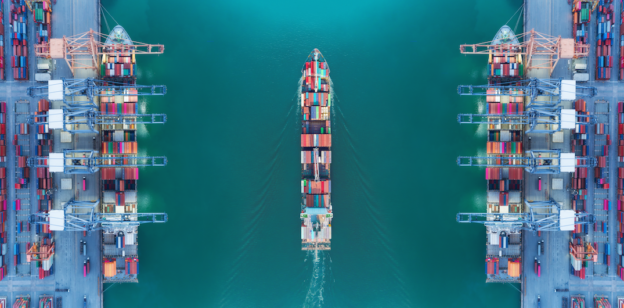Keeping Your Business Safe in an Increasingly Fluid Regulatory Environment
By Christian Salvans
In an era of unprecedented disruption, some changes are obvious, such as new technologies; new environmental, social, and corporate governance (ESG) reporting requirements; and a new world of hybrid work.
In manufacturing, another factor represents significant additional disruption: the rapidly changing regulatory landscape. In 202src, an average of 2.4 regulatory changes took effect every day worldwide, research conducted by UL found. In 2022, that average is five per day and rising. For global organizations, this pace of change can derail strategic planning, break supply chains, exacerbate distribution challenges, create legal hazards, and threaten reputation and revenue.
Manufacturers must keep pace with regulatory changes to satisfy customer commitments. Continuous compliance management helps ensure the timely release and sale of products, without penalty or interruption. The most effective compliance management features real-time intelligence on rules combined with flexible strategies to address numerous laws in multiple markets.
Compliance may seem like a moving target. Even an organization’s full intent to follow laws may come up against regulatory authorities communicating changes inconsistently. That makes it critical for organizations to partner with regulatory experts who can build relationships with the relevant authorities and offer technology that gives a real-time understanding of how regulatory changes affect their business—and when and how to take action.
Technology and Sustainability
In a regulatory world constantly adapting to market needs, two facets of manufacturing drive regulatory change above all others: technology and sustainability.
A product such as a TV was built 25 years ago using very different hardware and software than what is used in one that is built today. Emerging technology means emerging manufacturer regulations intended to ensure capabilities, materials, and production processes are safe and sustainable for employees, partners, and end users.
These revolutionary advances mean increasingly sophisticated artificial intelligence (AI) can allow a product to make critical decisions that could inadvertently compromise user security. As the Internet of Things (IoT) enables remote management of connected devices, that convenience increases the risk to customers’ data privacy and the threat of cyber attacks. With advances in wireless and cellular technology rolling out at different rates in different markets and mobile data usage growing exponentially, a global patchwork of new laws is continually unfolding, affecting research and development (R&D).
At the same time, the increasing demand for sustainable products and processes is driving a regulatory boom.
Manufacturers may have once seen sustainability as a point of pride; today, sustainability is both a market preference and a matter of law. The European Union (EU) adapts environmental laws to reduce carbon emissions and enforce compliant processes. With policies such as the European Green Deal and the EU Circular Economy Action Plan 2020, the region continues to enhance regulations on matters including right to repair, batteries, vehicles, and construction.
Beyond climate change, sustainability is also emerging as a human-rights issue. The recent German Supply Chain Due Diligence Act (GSCA) requires organizations to establish risk management systems by assessing any human rights risks in their supply chains.
Monitoring and Maintaining
Manufacturers’ two biggest challenges with regulatory change are: monitoring regulations and maintaining compliance across their product portfolio.
As new agreements and logistics technology increasingly facilitate global trade, manufacturers must monitor hundreds of regulations and requirements that evolve faster than ever. Four regulatory changes per day affect the electronics sector alone.
Each addition or change requires time-consuming, labor-intensive adaptations on product development and compliance revalidation that can delay time to market and hurt profits. Each change can potentially expose organizations, their partners, and their customers to vulnerabilities in cybersecurity, data privacy, safety, wireless, and interoperability.
Maintaining compliance for existing certified products requires continual assessment to gauge how regulatory changes affect products. That means retesting, reinspecting, resubmitting products for regulatory certification, and deciding whether and how to update these products’ components or production processes.
Taking Action on Compliance
Manufacturers need a strong foundation in knowledge and impact assessment as the companies work within the continually evolving and expanding regulatory and product compliance environment.
An organization trying to monitor and respond to hundreds of rules on environmental safety, electromagnetic compatibility, wireless and telecommunications, cybersecurity, fire, and chemicals—each in varying markets, formats, and languages—needs vast in-house resources to keep up on its own. Further, assessing and communicating what these changes mean for their current and future products’ certification, development, and distribution can be daunting. Documentation, audits, surveillance visits, supply-chain certifications, and technical requirements are considerations far beyond the capabilities of spreadsheets.
Partnering with regulatory experts using specialized technology can help manufacturers focus on the big picture of business strategy that drives customer satisfaction, sector leadership, and revenue growth.
To stay ahead of regulatory disruption, manufacturers should work with global experts to support their global compliance management requirements. A partner such as UL can offer a fully integrated platform for managing end-to-end compliance needs that can help businesses focus on strategy and growth. The benefits of this relationship include:
Monitoring and alerting manufacturers to regulatory changes and certification expirations
Connecting manufacturers’ certifications with a network of global experts
Assistance with gap and impact assessments on the products
Development of a tactical plan to keep products in compliance and help introduce existing/new products into new markets
Lowering manufacturers’ operating costs and noncompliance risks
The right expert can help facilitate manufacturers’ resource planning, product introduction and maintenance, and certification and surveillance testing—streamlining all regulatory requirements in an end-to-end service.
Just as technology and sustainability aren’t slowing down, neither is regulatory change. But partnering with an expert that brings specialized technology is critical for manufacturers to stay ahead of compliance issues, grow, and lead.
Learn more how UL can help your organization stay ahead of global regulations, improve speed to market, and better manage compliance across your portfolio.
Christian Salvans is a senior director of global market access at UL.

Comments are closed